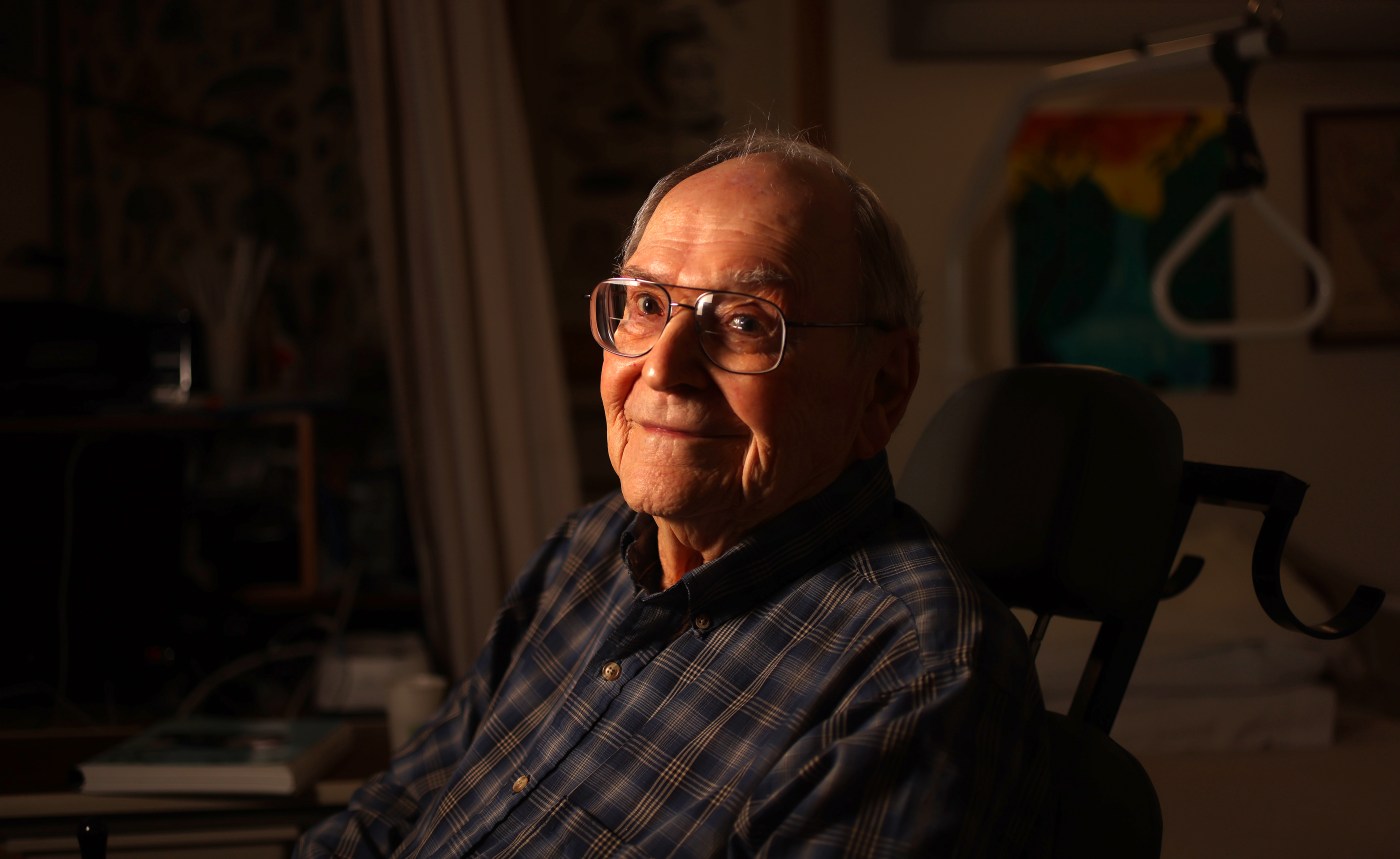Lifestyle
Bay Area Veterans Honor WWII Memories as Time Runs Short

Time is running out for the last living U.S. veterans of World War II. At 102 years old, Robert Heiss, who turns 103 next month, resides at the Veterans Home of California in Yountville. He enjoys a quiet routine filled with games of cribbage and mystery novels. Yet, as one of the few remaining World War II veterans in the Bay Area, Heiss carries memories that still weigh heavily after eight decades.
Heiss, a young boy from San Francisco, was once carefree, biking around the city and catching movies for a dime. However, everything changed on his 19th birthday, December 7, 1941, when his father woke him with the news that Pearl Harbor had been bombed. The United States declared war on Japan the following day, thrusting Heiss and his generation into a major conflict.
“On the West Coast, we were all scared we could be next,” Heiss recalled, tears in his eyes. “How could they get this far without our knowing?”
As the urgency to capture the stories of these war witnesses increases, organizations have emerged in the Bay Area to honor the remaining veterans. The National WWII Museum in New Orleans estimates that approximately 45,518 U.S. veterans from the conflict are still alive, most now in their 90s or older. California holds the highest number, with about 10,703 survivors. By 2030, that total is expected to drop to just over 5,000, with no surviving veterans anticipated by 2044.
Preserving War Memories Through Personal Narratives
In response to this impending loss, Bay Area initiatives aim to commemorate veterans through various activities, including dream flights and events at Richmond’s Rosie the Riveter WWII Home Front National Historical Park, which celebrates the contributions of women during the war.
Heiss joined the Air Force after the attack on Pearl Harbor and served in England as an aircraft technician from June 1943 until February 1946. After the war, he married and raised three children. Following the death of his wife, Betty, who had served in the Navy, Heiss turned to writing a book about their wartime experiences. The self-published work, titled “The Wonderful Life of Bob and Betty Heiss,” spans more than 500 pages and captures their journey from childhood to their lives today.
Heiss printed around 60 copies, sharing them with family and friends. “The book became a distraction for me as I was grieving,” he said. Now, he feels pride in knowing that his stories can endure long after he is gone.
Family Legacies and Historical Preservation
Steve James, a retired financial analyst and Vietnam War veteran, has dedicated himself to preserving his father’s legacy. His father, Ernest E. James, served in World War II. As a child, Steve often listened to his father’s vivid stories around the campfire. Years later, during the COVID-19 pandemic lockdown, he rediscovered a shoebox filled with his father’s wartime memorabilia, which included uniform badges, letters, and newspaper clippings.
“I was looking through the box at his stuff and said, ‘this has to be preserved,’” James explained. He took the items to the Contra Costa Historical Society in Martinez, which houses millions of historical documents. Executive Director Leigh Ann Davis expressed her excitement about the collection. “As a historian, it feels like a dream come true to be able to create a space where these documents can live forever,” she said.
Inspired by the urgency of preserving these personal accounts, Davis launched the Archive Yourself program, which encourages residents to digitize important family documents and memories.
While Heiss kept the planes flying, fellow San Francisco native James A. Scott carried his paints into the Pacific. Now 103 years old, Scott, a former corporal, sketched portraits of fellow Marines from his foxhole, capturing moments that families would later treasure as the last glimpse of their loved ones.
Reflecting on those years, Scott noted, “It was an important time in our history because everyone felt patriotic at that time, and that’s something people don’t know about anymore.” Many of Scott’s sketches are now preserved at the Library of Congress.
As the last of the World War II generation grows older, their families and communities strive to keep their stories alive. Through personal projects, community initiatives, and dedicated historical societies, these efforts ensure that the sacrifices and experiences of veterans like Robert Heiss, Steve James, and James A. Scott will not be forgotten.
-

 Politics2 weeks ago
Politics2 weeks agoHamas Chief Stresses Disarmament Tied to Occupation’s End
-

 Science2 weeks ago
Science2 weeks agoOhio State Study Uncovers Brain Connectivity and Function Links
-

 Entertainment2 weeks ago
Entertainment2 weeks agoMegan Thee Stallion Exposes Alleged Online Attack by Bots
-

 Science4 weeks ago
Science4 weeks agoResearchers Challenge 200-Year-Old Physics Principle with Atomic Engines
-

 Entertainment2 weeks ago
Entertainment2 weeks agoPaloma Elsesser Shines at LA Event with Iconic Slicked-Back Bun
-

 Top Stories2 weeks ago
Top Stories2 weeks agoFederal Agents Detain Driver in Addison; Protests Erupt Immediately
-

 Business2 weeks ago
Business2 weeks agoMotley Fool Wealth Management Reduces Medtronic Holdings by 14.7%
-

 Business2 weeks ago
Business2 weeks agoHome Depot Slashes Prices on Halloween Favorites Up to 75%
-

 Top Stories2 weeks ago
Top Stories2 weeks agoOrioles Hire Craig Albernaz as New Manager Amid Rebuild
-

 Entertainment2 weeks ago
Entertainment2 weeks agoSyracuse Stage Delivers Lively Adaptation of ‘The 39 Steps’
-

 Top Stories2 weeks ago
Top Stories2 weeks agoWill Smith Powers Dodgers to World Series Tie with Key Homer
-

 World4 weeks ago
World4 weeks agoGlobal Military Spending: Air Forces Ranked by Budget and Capability








